If You Receive Rabies Vaccine if You Get Infected Again Do You Get Another Rabies Series
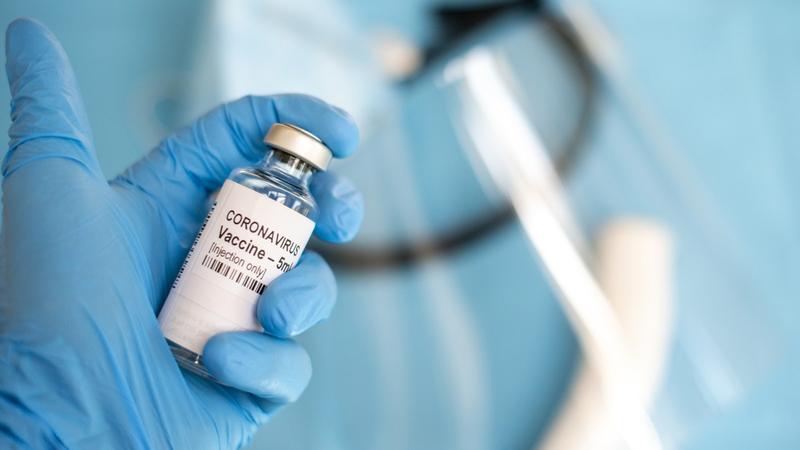
Despite the coronavirus pandemic affecting billions of people around the world, various vaccines have started making their way to the market — and hope for a slowdown in the spread of the virus is on the horizon. It's a great reminder that modernistic science accomplishes amazing feats on an ongoing footing. Just it'southward also understandable to wonder why the process of creating a vaccine, from early on development to full rollout, takes as much time as it does — peculiarly considering the urgency that the COVID-19 pandemic has made us all experience. The reality is that the answer is complicated.
Biotech and pharmaceutical companies similar Moderna, Pfizer and Merck as well as research universities similar Oxford have all launched emergency fast-track development approaches and clinical trials to create successful coronavirus vaccine candidates, but certain safeguards merely tin can't be skipped throughout the development procedure — and that's all in the interest of public safety. Although COVID-xix continues to accept lives on a daily basis, a rushed vaccine that isn't properly tested could ultimately prove to exist just every bit unsafe equally the virus.
Now that vaccine rollouts have started and the beginning recipients are getting doses of COVID-xix vaccines, it'south natural to wonder about vaccine prophylactic and long-term health. To better understand the challenges scientists have surmounted in creating a fast, safe and effective coronavirus vaccine, let's accept a look at how long the normal development process takes and how the accelerated approving procedure compares.
Stages of Vaccine Development
According to guidelines established past the CDC, vaccines pass through 6 general stages of evolution: exploratory, pre-clinical, clinical, regulatory review and approval, manufacturing, and quality control. The full process is essentially the same equally the process for whatever drug approved for use in the United States. These stages are mandated by the Nutrient and Drug Administration (FDA), with its Center for Biologics Evaluation and Research (CBER) division officially in charge of regulating vaccines. Information technology'southward non unusual for a vaccine to take 10 to 15 years to complete all the phases nether normal circumstances.
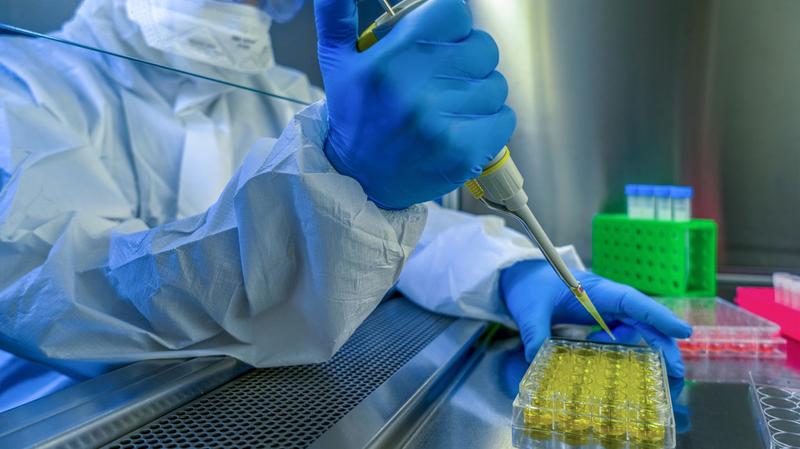
During a public health crisis, such as the one caused by the 2020 novel coronavirus pandemic, the FDA may allow emergency adjustments to the timeframes normally associated with these stages. However, all the stages must all the same be completed to varying degrees, depending on the stage. In particular, the regulatory review and approval stage takes place much more quickly.
Exploratory Stage
Laboratory research and testing makes up the beginning phase of vaccine evolution. In this phase, scientists from the academic sector, government sector or private sector try to place natural or synthetic antigens that could either protect the human trunk from the target affliction or at least help the trunk fight the disease. Different vaccine approaches tin be used to establish immunity, and it takes fourth dimension in this stage to determine which type will work all-time. For example, some vaccines incorporate mild strains of live virus, while others apply inactive viruses to trigger immunity. The exploratory stage often takes ii to 4 years to complete, with many vaccine ideas abandoned along the way.
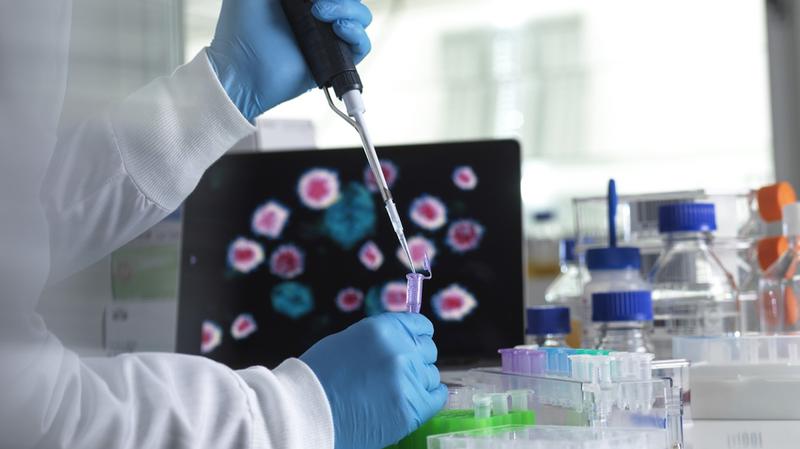
Pre-Clinical Phase
Once a potential vaccine has been developed, researchers start pre-clinical studies using animal testing to evaluate the allowed response created by the vaccine. Animal studies commonly involve monkeys due to their biological similarities to humans but ofttimes offset begin with mice or rats. As the enquiry progresses, researchers may inject animals with the vaccine then attempt to infect them with the target virus. The goal of the studies is to determine the potential cellular reaction humans could take to the vaccine.
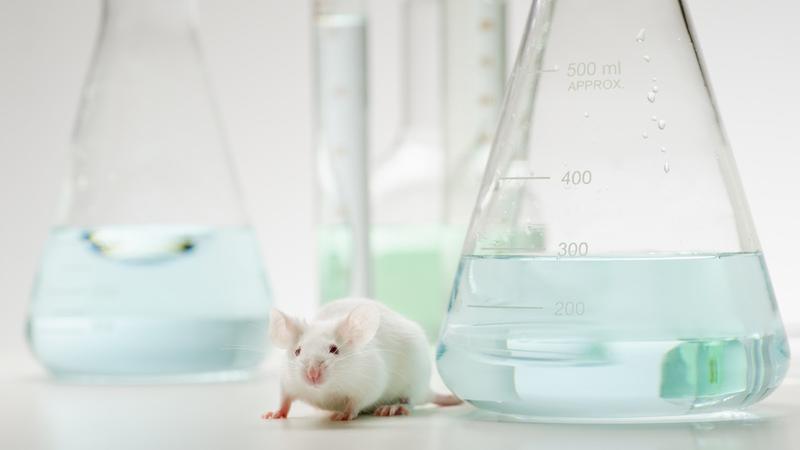
Researchers also use the results in this phase to make adjustments to dosing and determine the safest delivery system — ordinarily subcutaneous injection or intramuscular injection — for the vaccine. The pre-clinical stage is the time when researchers effort to make up one's mind the effectiveness of the vaccine and adapt the unlike components to attain the all-time results with the to the lowest degree amount of side effects. It'south common for potential vaccines to fail during this phase by non triggering immunity or causing unsafe complications. The pre-clinical stage typically lasts one to two years.
At the finish of the pre-clinical stage, a sponsor — possibly a individual company, regime agency or research institute — submits an application to the FDA for approval of an Investigational New Drug (IND). The bidder must provide all the details and results of the laboratory testing and creature testing as well equally draw future protocols for human testing, manufacturing processes and distribution. Human clinical trials cannot keep until the FDA approves the application and an institutional review board approves the clinical protocol.
Clinical Phase: Stage 1
Every bit with any drug, clinical development of a vaccine takes place in three phases. The first phase involves a relatively modest group of salubrious exam subjects, ordinarily between 20 and 100 people. Although children are often the intended recipients of vaccines, only adults participate in the primeval phase of testing. The trials are sometimes blind — recipients don't know if their doses are real — and they sometimes involve claiming studies, which crave researchers to deliberately endeavor to infect subjects with the virus later giving them the vaccine. Researchers carefully command the "infection" process and closely monitor participants' reactions. The full potency of a virus may not be used, for example.
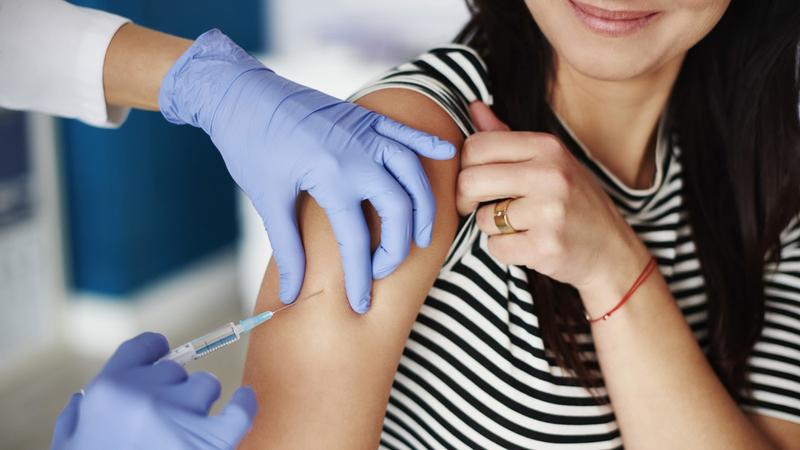
The purpose of testing at this phase is to evaluate the immune response in humans and look for potentially unsafe side furnishings. If the results are positive, testing advances to the adjacent clinical trial phase. If serious problems and risk factors are identified, researchers may attempt to adjust dosing to eliminate the problem or endeavor to arrange the existing vaccine. In some cases, they may decide to carelessness a vaccine and create an entirely new version.
Clinical Stage: Phase 2
During Phase 2 human clinical trials, researchers focus on a larger group of test subjects — unremarkably numbering in the hundreds — that fit the criteria of the boilerplate vaccine recipient. That includes using younger exam subjects for vaccines intended for children and older test subjects for those intended for the elderly. The trials are controlled, random and use a placebo vaccine for some participants.
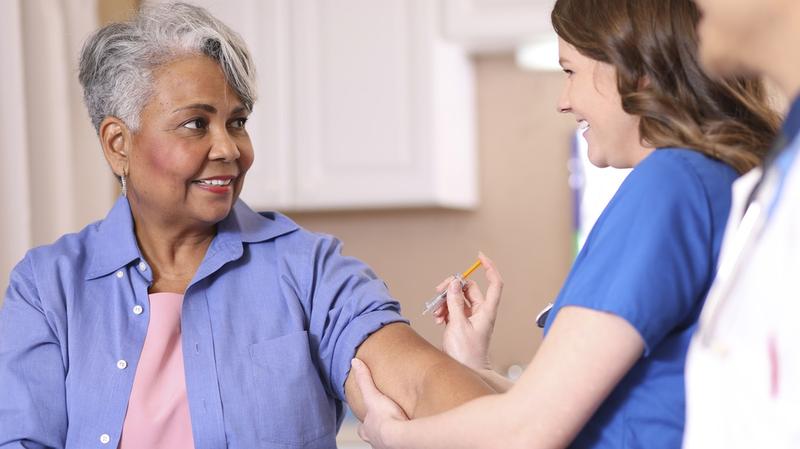
Phase two continues to focus on the overall immune response of examination subjects too equally the severity and prevalence of side effects. It also attempts to pinpoint the most common side effects across the larger group of people. More than attention is besides paid to the vaccine's delivery method at this phase to determine if effectiveness could be improved by altering how the vaccine is administered.
Clinical Stage: Phase 3
By the fourth dimension it reaches a Phase 3 clinical trial, a vaccine has already proven its effectiveness — and its potential side effects — amid a few hundred people, but information technology's still of import to learn whether those results can exist considered reliable among the larger population. Phase iii trials usually involve thousands of people. Testing protocols are random and double blind — neither researchers nor participants know if doses are placebo — at this phase. Placebos could exist anything from saline solutions to other helpful vaccines.
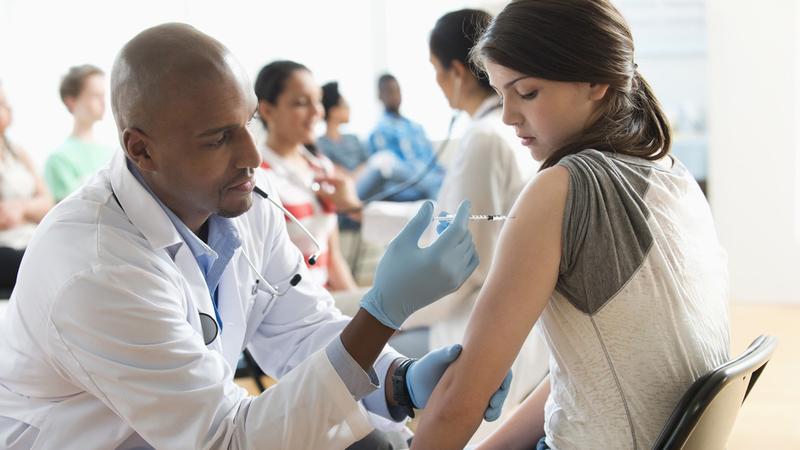
Phase three offers many benefits in the final stages of the vaccine'due south evolution, including allowing researchers to notice rare side effects that might only occur one time in a grouping of 10,000 people, for instance. This allows wellness officials to amend prepare for every potential event of receiving the vaccine. At this phase, researchers hope the end effect is a vaccine that finer prevents the affliction by producing protective antibodies while only causing minimal, balmy side furnishings.
Regulatory Review and Approval
After completing the final stage of human clinical trials, researchers can submit a Biologics License Awarding (BLA) to the FDA to request approval to produce the vaccine and distribute it. A special team of scientists and medical professionals at the FDA will evaluate the results of all the clinical findings in all the previous trials and make an approval decision based on the risks versus the benefits of the vaccine. Earlier making a final decision, they also society an inspection of the factories that volition produce the vaccine. Labeling for the vaccine also follows strict guidelines and requires blessing.
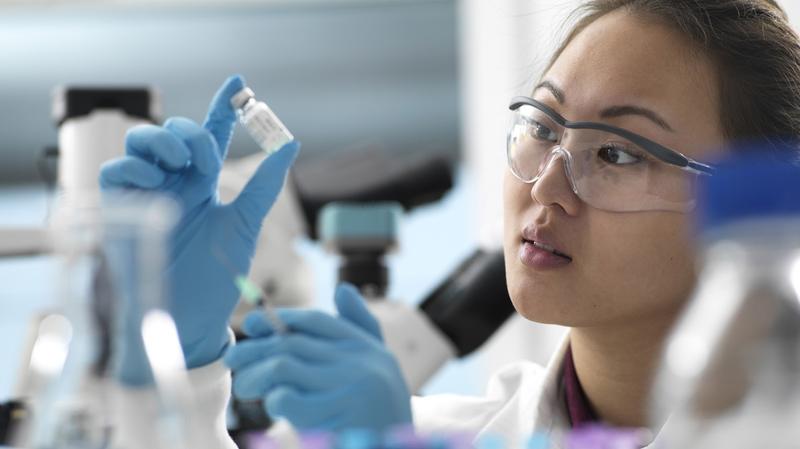
Upon FDA approval, the sponsor submits the blessing to the Vaccines and Related Biological Products Advisory Committee (VRBPAC) for review. This committee consists of scientists and medical professionals who don't work for the FDA that offering an contained review of the safe and effectiveness of the vaccine.
Vaccine Manufacturing
FDA monitoring of the vaccine doesn't finish when a license is issued for a vaccine. The agency monitors the manufacturing procedure and the manufacturer'south testing protocols to ensure safe by making sure vaccines aren't contaminated and deliver consistent potency. Manufacturers are always subject to facility inspections, and the FDA can also conduct its own testing on vaccine samples at any point.
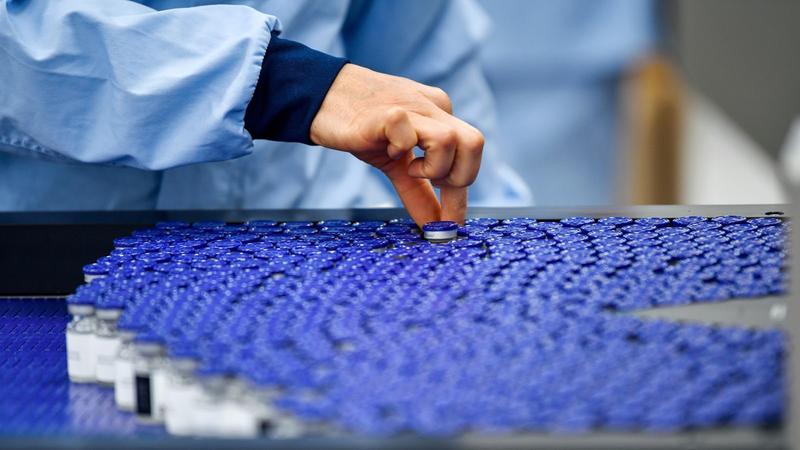
Manufacturers start developing their manufactory designs and manufacturing protocols for large-scale production later vaccines make information technology past Phase 1 clinical trials and a portion of Phase 2 clinical trials. Once company leaders have sufficient evidence to conclude the vaccine could exist successful, manufacturing planning begins to ensure factories are ready to be inspected and move into product when the time comes.
Quality Command
In addition to ongoing facility inspections and vaccine testing, various protocols are put in place to ensure the ongoing quality and safety of vaccines after their blessing. In some cases, researchers may cull to go along with Phase four clinical trials, usually for the purpose of determining other potential uses for the vaccine or to pinpoint ways to farther heighten its effectiveness or eliminate side effects.
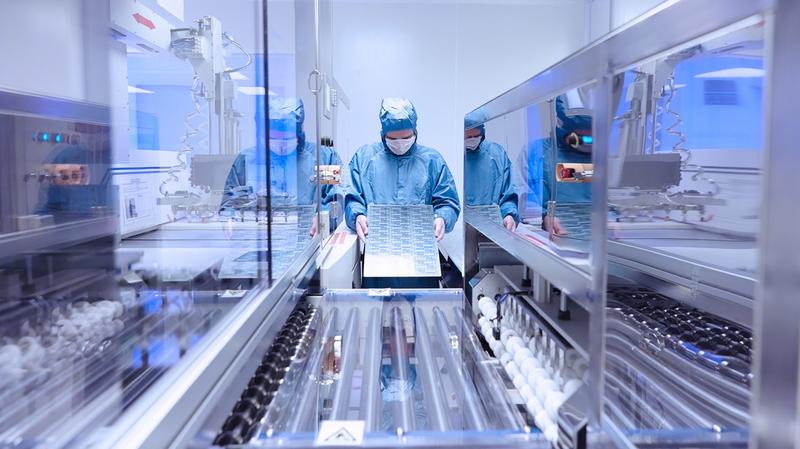
The Vaccine Adverse Upshot Reporting Organisation (VAERS) tracks and monitors side effects of all the different vaccines and provides all that information on an piece of cake-to-use website established by the CDC and FDA in 1990. According to the CDC, the goal of the site is to track adverse events associated with different vaccines to cipher in on potentially serious problems. VAERS receives about 30,000 adverse upshot reports each twelvemonth, with 10% to 15% of the events serious enough to require hospitalization for life-threatening illnesses or even disability or death.
When events are reported, the CDC investigates to determine if a vaccine could have acquired the effect. In many cases, other mitigating factors are to arraign. They likewise routinely evaluate VAERS data to uncover rare adverse reactions as well every bit rail the frequency and severity of known side furnishings. This information also allows scientists to detect unusually problematic vaccine batches and make connections to potential risk factors for sure side effects. Of grade, most people don't report minor adverse events like swelling at the injection site, which makes fully accurate tracking incommunicable. Serious adverse events are more likely to be reported, especially right after a vaccination when the connectedness seems obvious.
As well established in 1990, Vaccine Prophylactic Datalink (VSD) consists of a series of linked databases containing medical records and vaccine information, including details related to adverse reactions to vaccines. The data comes from medical practices and not from randomized, controlled, blind trials, which makes information technology a trivial harder to evaluate the data, simply it's still a useful tool in monitoring real-time data to compare adverse consequence rates in recently vaccinated people to rates in unvaccinated people.
Emergency Protocols and Approvals
As shortly equally the world really understood the reality of the novel coronavirus pandemic and the threat it posed, the CDC, the Earth Health Arrangement (WHO) and other health institutions effectually the globe were bombarded with questions — and demands — about how long it would take to develop a vaccine for the virus. Hearing that a vaccine following a normal track could take more a decade to reach the market place felt alarming in the midst of the pandemic'southward urgency afterward case numbers and decease tolls had been climbing chop-chop.
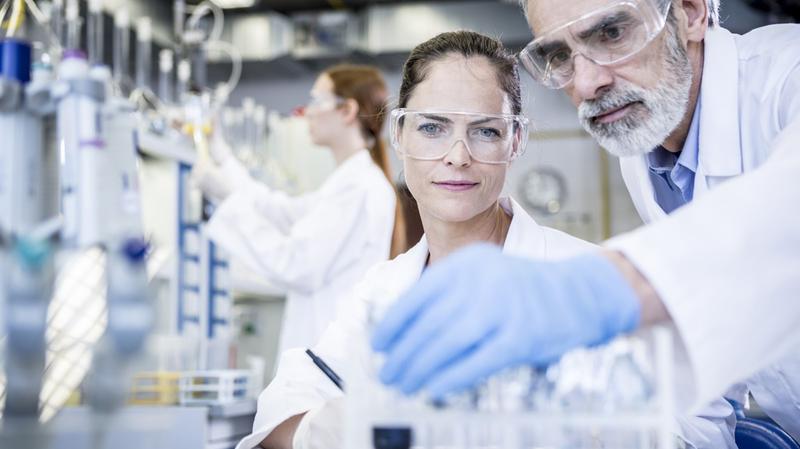
In the Usa, when faced with an urgent public health crisis, the FDA recognizes the need to loosen some of the normal restrictions to speed upwardly the typical timeline for vaccine development. But, in the case of COVID-xix vaccines, that hasn't meant companies and research institutions could completely condone the rules or the typical evaluation timeline. When the world needs a vaccine quickly, i that causes dangerous health risks of its own won't aid the situation, which is why a modified testing process comes into play.
To carefully balance the urgent need for an effective vaccine and the need for that vaccine to be prophylactic, pharmaceutical companies engaged in carefully designed — just accelerated — development, testing and clinical trials. The FDA has facilitated this procedure by processing Emergency Use Authorizations (EUAs), which are provisions that allow the agency to brand products available that haven't gone through their typical full testing and approval processes. EUAs are granted during public health emergencies for unapproved treatments when approved treatments don't notwithstanding be. In the case of the COVID-19 pandemic, pharmaceutical companies like Pfizer and Moderna that have adult vaccines accept been applying for EUAs to allow those treatments to be utilized on an emergency basis.
Although EUAs grant authorization to previously unapproved vaccines, those treatments nonetheless have to undergo rigorous testing and clinical trials — they're only non as long as they'd typically be during a normal approval process because some of the review process is shortened. And they yet demand to meet sure benchmarks that aid make up one's mind their safety before they tin can make their mode to the public. The vaccine must still go through the progressively detailed and all-encompassing phases of testing that ultimately see tens of thousands of people participating in the clinical trials. This is to effectively determine how the vaccine candidates affect people's immune systems and to get together enough information about a sample of people who represent the U.Southward. population. Written report participants also come from a wide range of demographic and age groups and have varying wellness statuses — factors that aid researchers determine how the vaccine might affect unlike people in different means, along with the early side effects that may arise in some populations.
Considering of the faster-than-normal process that today's COVID-19 vaccines take gone through to obtain EUAs, additional studies will be conducted to discover more than almost the long-term effects of the vaccines, the full duration of immunity they provide and the potential long-term side effects they might cause. Due to the accelerated process many of the vaccine candidates are cycling through earlier emergency approval, developments are irresolute rapidly. But with the progress pharmaceutical companies have fabricated, including Pfizer and Moderna'southward applications for EUAs, the futurity of American public health in relation to the COVID-19 crunch is finally starting to look brighter.
Source: https://www.reference.com/science/how-long-to-develop-vaccine?utm_content=params%3Ao%3D740005%26ad%3DdirN%26qo%3DserpIndex
0 Response to "If You Receive Rabies Vaccine if You Get Infected Again Do You Get Another Rabies Series"
Post a Comment